
|   |

|   |
'Shakuntala: The Love Saga' in Sattriya style - Manjari Sinha e-mail: manjari@sinha.com Photos courtesy: Manikanchan Kala Manjari March 20, 2020 Manikanchan Kala Manjari premiered their ambitious first mega production 'Shakuntala: The Love Saga' in Sattriya dance style, during their annual Manikanchan Nritya Mahotsav at the Madhabdev International Auditorium, Srimanta Shankardev Kalakshetra, Guwahati recently. 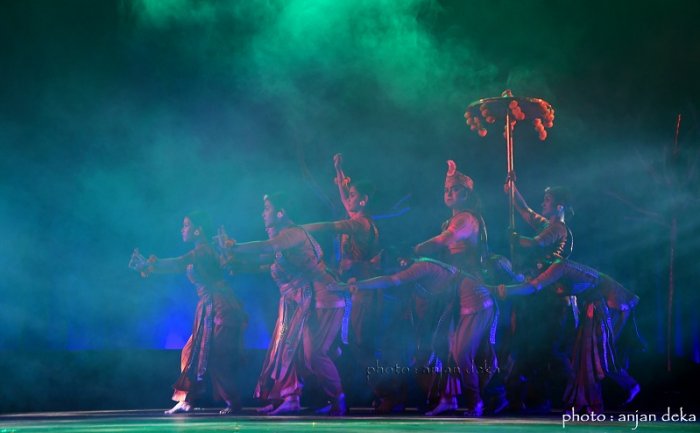 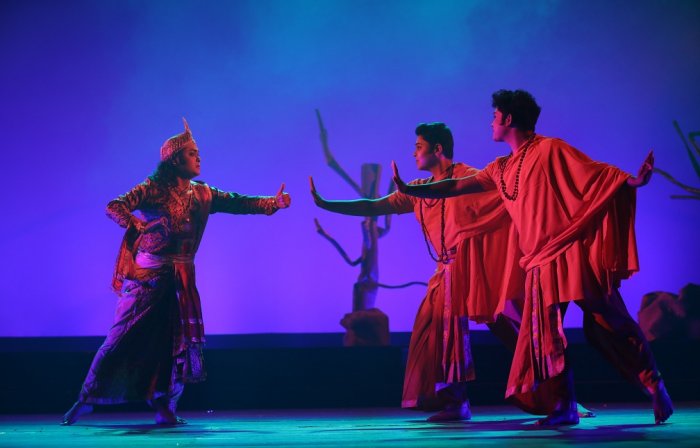 A recognized institute of Art and Culture, Manikanchan Kala Manjari was established by the well-known Sattriya dance duo Dipjyoti Das-Dipankar Arandhara in 2008 at Krishnapur Beltola, Guwahati, with an aim to promote Sattriya tradition and create awareness about Sattriya dance, music and drama. Opened with just two students by these two enthusiastic Sattriya artists who believe that 'a single drop of water makes a mighty ocean,' the institution with more than hundred students at present offers courses in Sattriya dance, Borgeet, Khol and Kathak. Online digital classes are also available for the benefit of students from foreign lands. Dipjyoti Das and Dipankar Arandhara were initiated into Sattriya dance at a tender age under gurus Bobbyrani and Dollyrani Talukdar. They were further groomed under Guru Ram Krishna Talukdar. Graduates from Luit Konwar Rudra Barua State College of Music in Sattriya dance, they also received Visharad degree in Kathak. With a Master's degree in performing arts from Dibrugarh University, Dipjyoti received a gold medal for Sattriya dance in the Youth Festival at Guwahati University and Dipankar obtained first class first position in B. Music from the State College of Music affiliated with the Guwahati University. Dipajyoti and Dipankar have performed in major dance festivals of India and have taken Sattriya dance even to the national level reality show 'Bharat ki Shaan Rum-Jhum' with the blessings of Dr. Sonal Mansingh who presented the popular show. Manikanchan Nritya Mahotsav is the annual festival of their institute showcasing their own well-trained students before presenting the invited renowned artistes. The Manikanchan Nritya Jyoti Award is conferred upon a young artiste on this occasion. 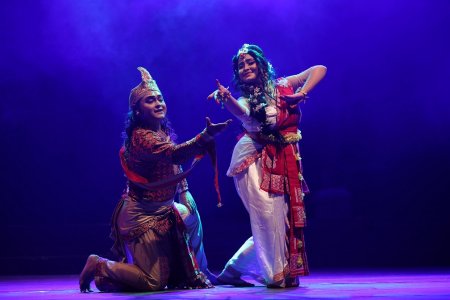 Dushyant & Shakuntala 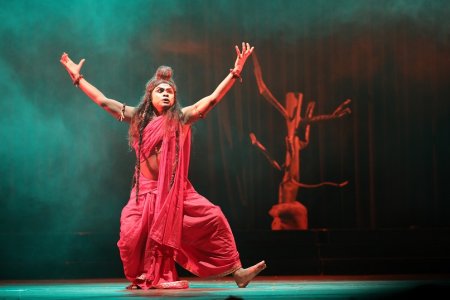 Sage Durvasa Inspired by the renowned Sanskrit poet Kalidasa's original Sanskrit drama 'Abhijnana Shakuntalam' that revolves around the alluring love story of king Dushyant, the king of Hastinapur and Shakuntala, the adopted daughter of sage Kanva from the Adiparva of the epic Mahabharata, the Sattriya dance drama was imaginatively conceived, discerningly directed and creatively choreographed by Dipjyoti-Dipankar who also took charge of the aesthetically designed costumes. Produced by Purabi Saikia Chaudhuri for Manikanchan Kala Manjari, the mega production was assisted by professionals like Bhaskar Jyoti Ojha for the script and music, Kaushik Borbora for light designing, Bishnu Sarma for sound design and Mintu Saan for the painting like sets. The Sattriya interpretation of the famous Sanskrit drama was crafted in Brajavali (Braj-Boli) and the ancient Assamese dialects instead of the original Sanskrit, hence it relied entirely on the Sattriya music and dance traditions, incorporating the various folk musical elements of Assam as well. No wonder the script and music sounded so authentic in consonance with the lyrics. The flawless recording with professional vocalists and musicians along with Bhaskar Jyoti Ojha himself playing khol, mridang, percussions and reciting the bol-padhant, Dwipendra Sarma on violin, Anand Dikshit on sitar and Pradip Deka on flute, enhanced the appeal of the beautiful background score of the exquisitely choreographed presentation. Right from the opening scene where sage Kanva performing the morning ritual of Havan at the Tapovan in the twilight before the sunrise, is informed by Gautami about a newborn girl child being guarded by the eight birds, the Ashta-Pakshi, the professional standard of music, dance to the appropriate costumes, set and light designing came to the fore. The scenes of Shakuntala playing with her friends in the verdant Tapovan and caressing the child deer lovingly, the herd of deer running in panic scared by the sound of the galloping horses of king Dushyant's chariot, the lovelorn Shakuntala being teased by her friends, the aesthetically performed Gandharva-Vivah in the floral canopy held by the Rishi-Kanyas, the Vidai (departing) scene of Shakuntala, the curse of sage Durvasa, the boat crossing the river and the big fish swallowing the ring from Shakuntala's delicate fingers playing with the waters... each and every scene till the end, was enhanced by the melodious music, captivating choreography and the imaginative light and sound designing. Such professional treatment can take the Sattriya dance drama far and wide but for the length, which could be easily edited to the desired limit by the competent choreographers. 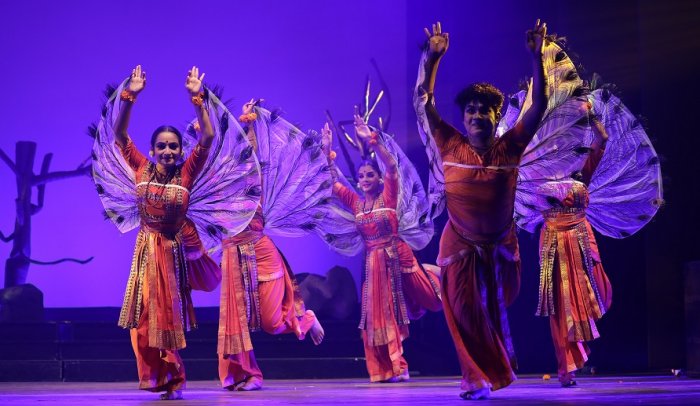 The Manikanchan Nritya Mahotsav opened earlier in the evening with the younger students performing Chali Nritya, Mati Akhada, Krishna Nritya, Jhumura and Ramdani in different age groups respectively, with full confidence and apparent enjoyment. Dipjyoti and Dipankar deserve kudos for their uncompromising standards not just in visualising the immortal Abhijnana Shakuntalam of Kalidasa come alive in its Sattriya version of 'Shakuntala: The Love Saga' but also in carrying forward the tradition with such dedication and holistic approach.  Manjari Sinha has an M.A. in Sanskrit and Music, and trained in vocal, tabla, sitar and Kathak dance. She has regular columns in national dailies as a music and dance critic. |